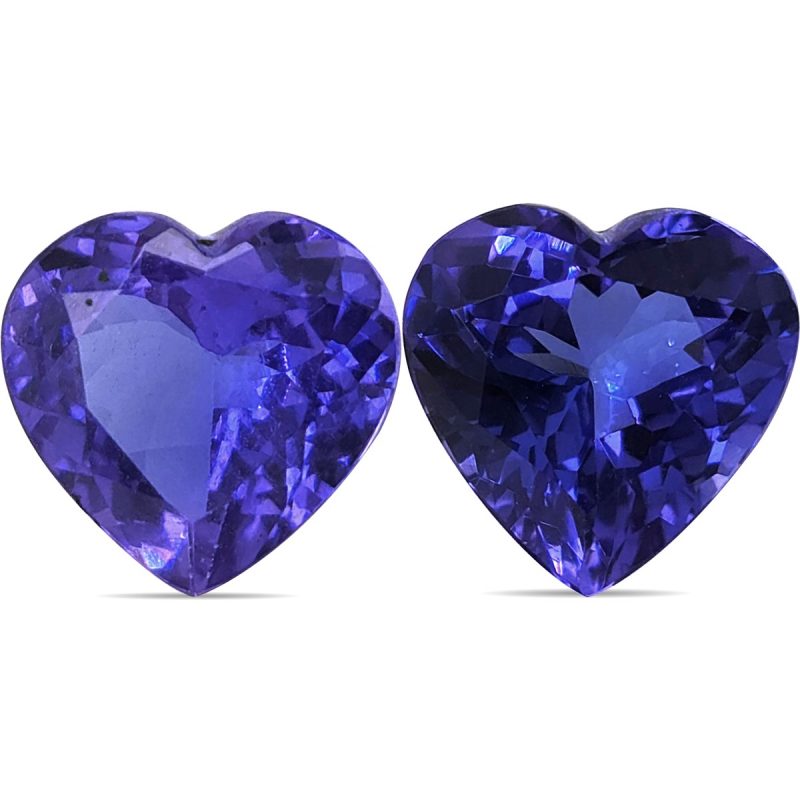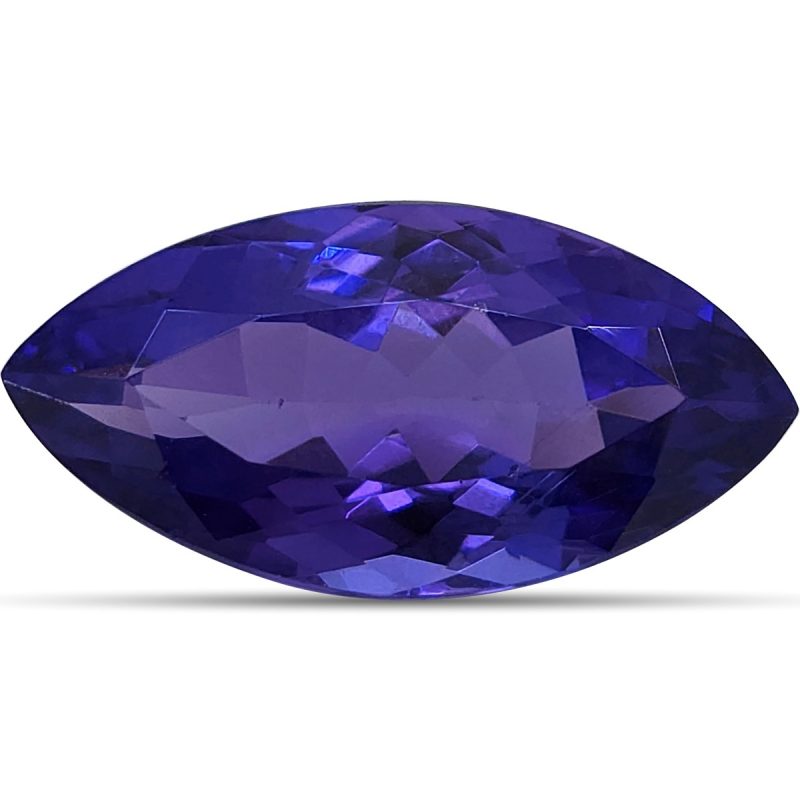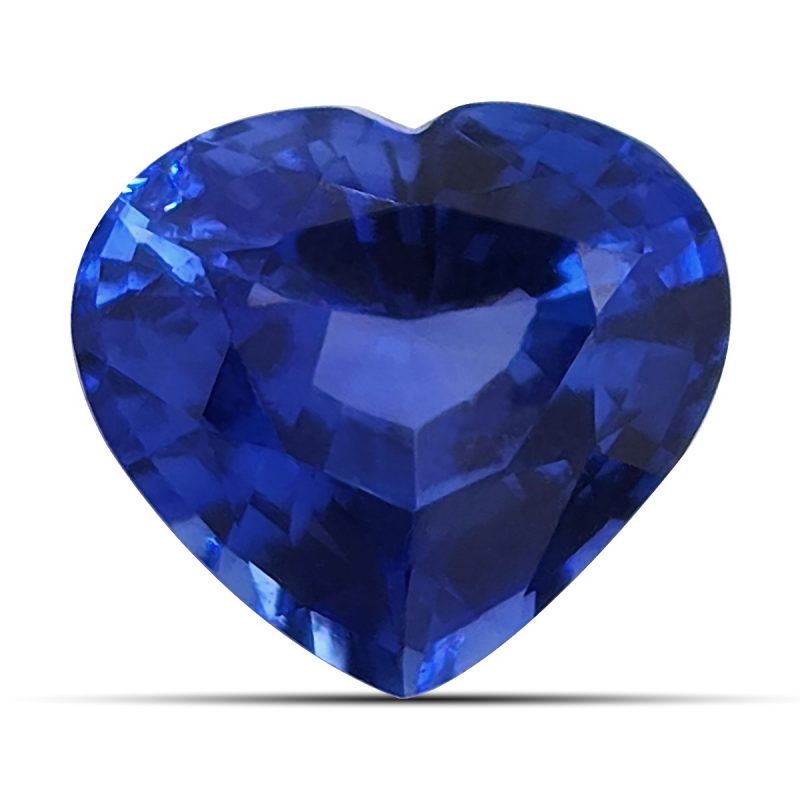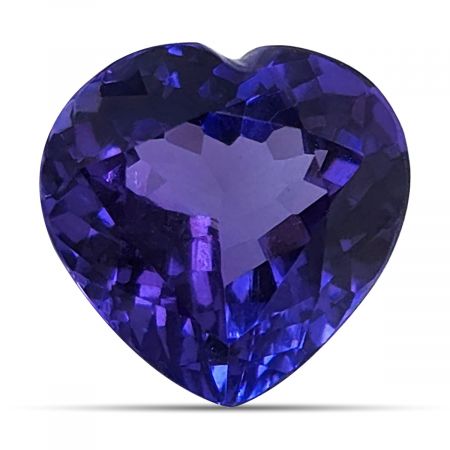


If you’re after a richly colored blue gemstone then two immediately come to mind: the stunning tanzanite and the fabulous sapphire. Each gem has its own particular beauty and has been used as the centerpiece of some of the world’s finest jewelry. We’ve done a deep-dive into these two enigmatic gemstones to help you answer the question ‘Which is best: Tanzanite or Sapphire?’
Tanzanite and Sapphire Shades of Blue


Blue Sapphire 

Tanzanite
Cornflower and cobalt, cyan and cerulean: blue comes in a multitude of tones and has as many different names. While some top quality tanzanite and sapphire are nearly identical shades of blue, each gemstone has a far more complex color story to tell.
Blue sapphire covers the spectrum from a greenish blue to a pure blue and through to a violet blue. It is vividly saturated stones in the latter range that are most desired and bear the most similarity to some tanzanite. Top quality tanzanite ranges from a violetish blue through to a mostly violet. Its full range of colors runs from the pure blue to the violet.
Interestingly tanzanite is strongly pleochroic which means that it can show different colors when viewed from different angles. Lighting can also affect its appearance with the stone appearing more violet under warm incandescent lighting and more blue under cool fluorescent lighting.
Tanzanite and Sapphire Rarity
Tanzanite is famously only found in one location in the world: a few square miles near the foothills of Mount Kilimanjaro in the east African country of Tanzania. It was discovered in 1967, named and marketed by Tiffany & Co and became an immediate sensation.
Since that time no new major deposits have been discovered and geologists estimate that mines will be depleted in just a few decades time. Consequently tanzanite has often been referred to as the ‘gemstone of a generation’ because this generation will be the only ones able to buy tanzanite from the primary deposits.
Blue Sapphire is mined all over the world in locations diverse as the US, Africa, Asia and Australia. The most famous mines, and producers of the most desired velvety blue stones, are in Kashmir, Myanmar (the former Burma) and Sri Lanka (the former Ceylon). The famed Kashmir mines were only active for a few years and Myanmar produces fewer stones each year. Recently Madagascar has become an important source for good quality blue sapphires.
Tanzanite and Sapphire Durability


Blue Sapphire 

Tanzaanite
Durability refers to a gemstone’s general ability to withstand the stresses of daily life. This includes scratches, knocks, changes in temperature, humidity, light and exposure to household chemicals. The more durable a gemstone is the more suitable it is for daily wear.
The sapphire is well-known as an exceptionally durable gemstone, which is one of the reasons it is a popular choice for engagement rings. It has no cleavage (a propensity to break when knocked) and ranks a 9 on the Mohs scale of hardness (only a diamond is higher at 10).
The tanzanite is unfortunately not as durable as the sapphire. Its toughness is notably lower as it has cleavage and it only ranks a 6 to 7 on the Mohs scale as it can scratch relatively easily. It is for these reasons that tanzanite is not recommended for engagement rings which usually are subject to much wear and tear.
If you still yearn for a tanzanite ring don’t despair! The risk of damage can be mitigated by protective settings and careful wear (no gardening please). Earrings and pendants are probably the best ways to show off your tanzanite. Make sure you store your tanzanite jewelry carefully and clean with warm soapy water – not ultrasonic or steam cleaners. A little care can make sure that this unique gemstone remains as beautiful as the day that you bought it.
Tanzanite and Sapphire Value
Even thought tanzanite is far rarer than sapphire, the latter’s long history and association with royalty (Princess Diana’s engagement ring for example) means that it is far more popular and thus more expensive. Whether this will remain the case is impossible to say. Indeed some people are buying tanzanite as an investment stone in expectation of a rise on price caused by its expected future scarcity.
Tanzanite or Sapphire?
So we come back to the original question – ‘Which is Best: Tanzanite or Sapphire?’. We hope that the information above has helped to provide you with an answer, but if you need any help please do get in touch with us at JupiterGem. We have decades of experience and a wide range of tanzanites and sapphires to suit any budget. Let us help you find your perfect blue gemstone!








